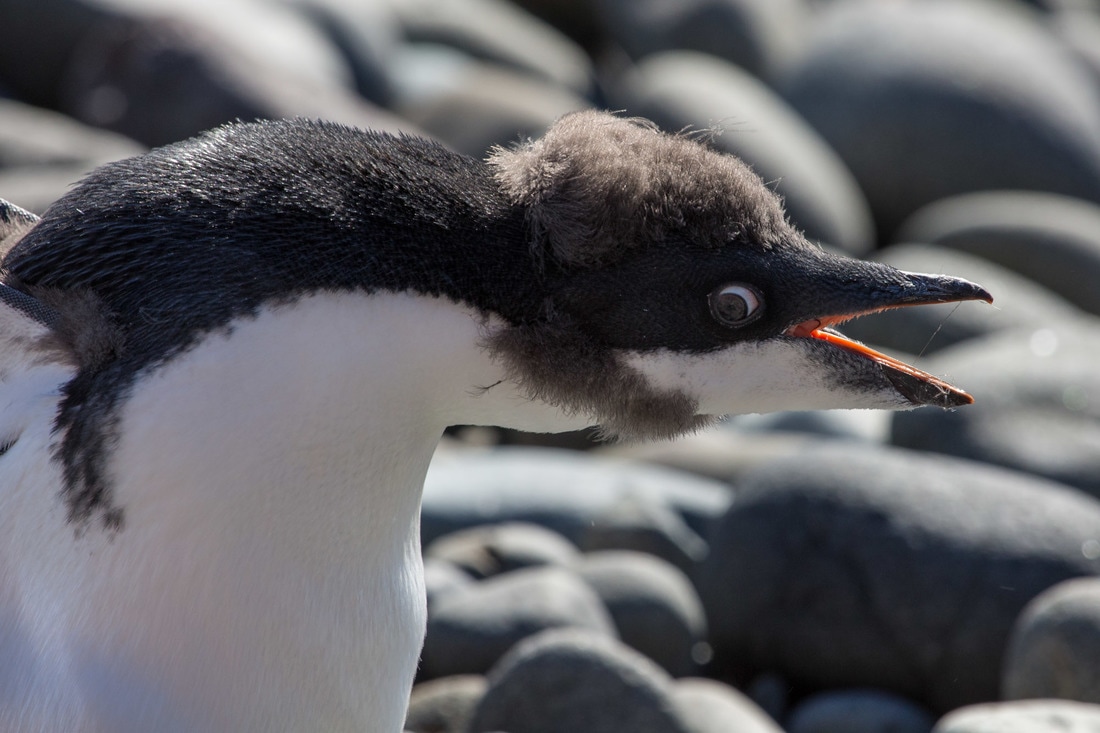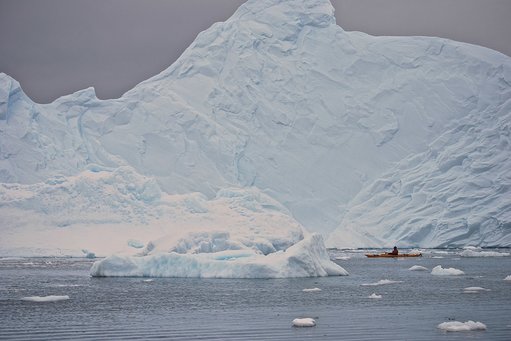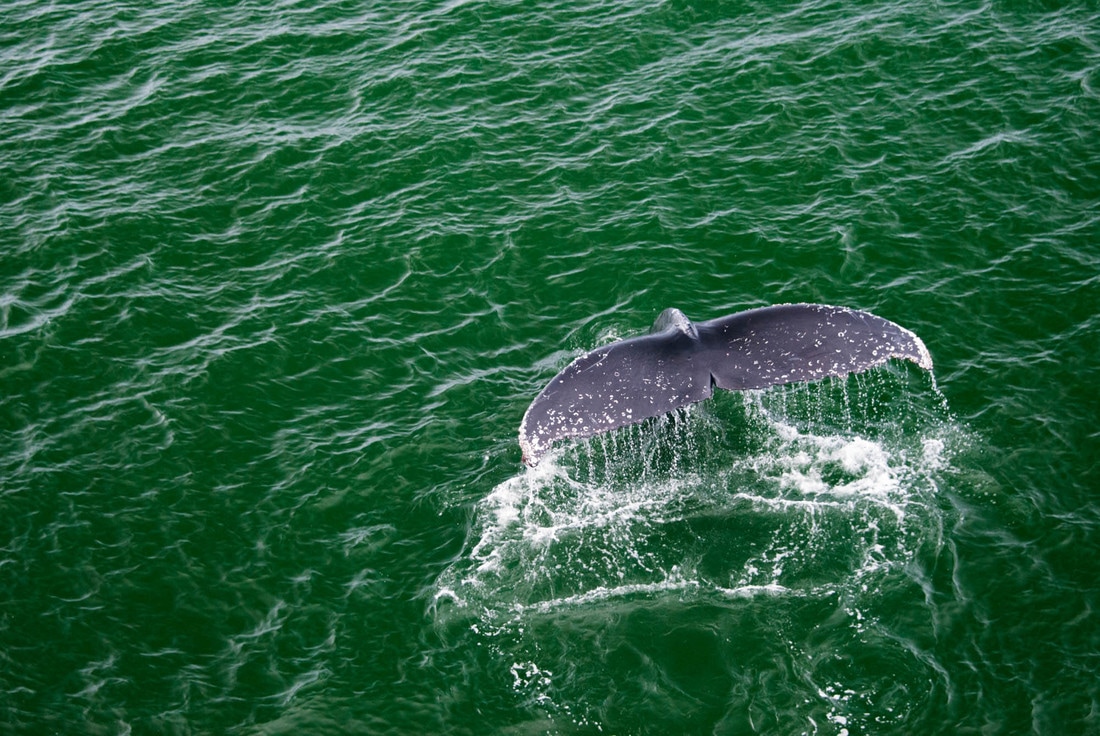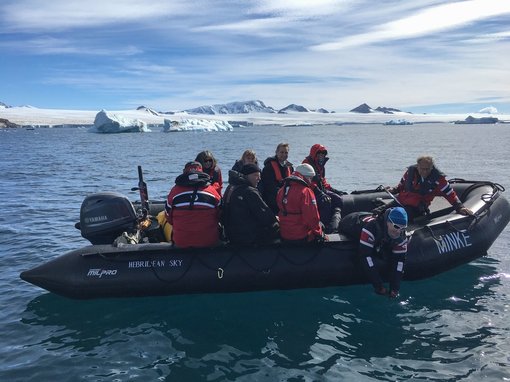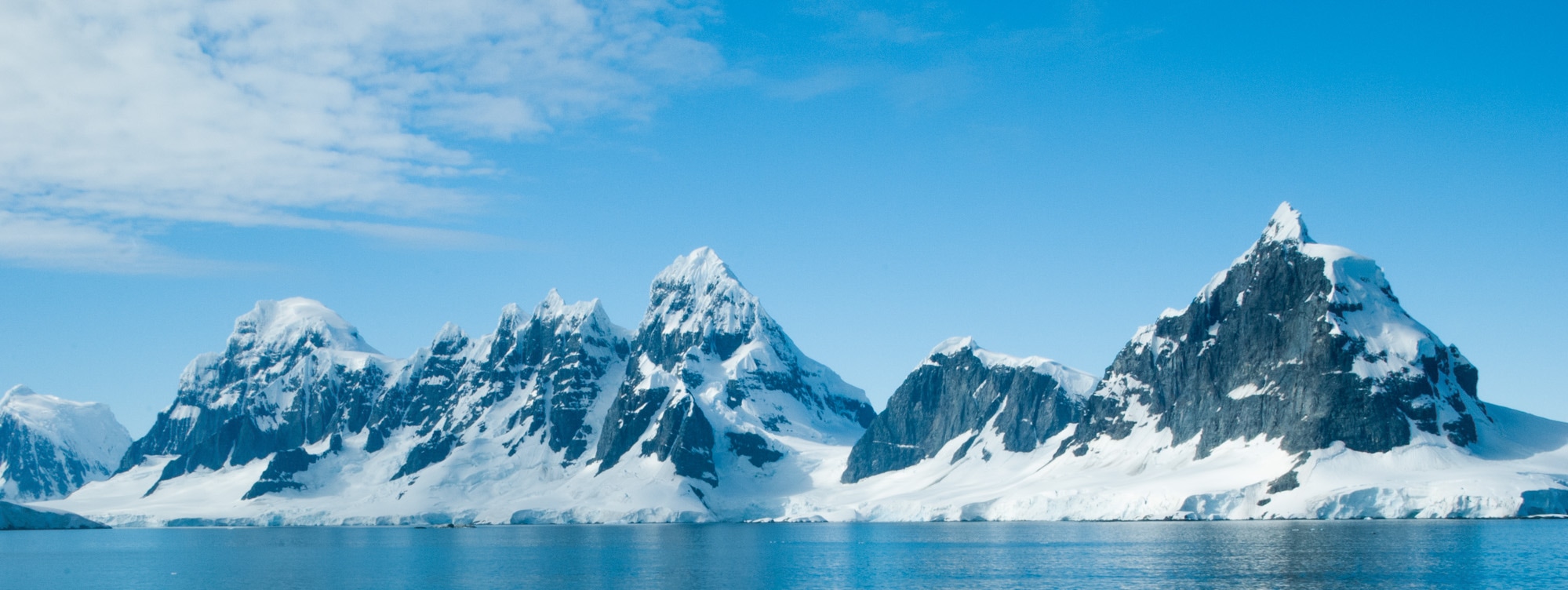By: Annette Bombosch and Phil Hunter
The Southern Ocean is a magnet for a tremendous amount of diverse wildlife. The summer season, during which so many animals come to feed and breed, is relatively short on the Antarctic Peninsula by nature of its extreme latitude. The end of February and beginning of March is one of the best times to be in Antarctica.
One morning I was greeted by penguin chicks, running busily along the shore while chasing their parents for food. The chicks were starting to fledge, losing and pecking out most of their fluffy down feathers. Since they can’t reach the ones on their head and back, these feathers are the last to fall out giving each of them quite a unique hairstyle. I can’t help but fall in love with these curious and clumsy little penguins. Soon they will enter the water where the clumsiness will disappear. The sea is their home, and they will swim gracefully throughout the Southern Ocean until next year’s breeding season arrives in October.
Throughout the season, we were busy taking water samples for the Global Microplastics Initiative from two expedition ships. Mid-January, I joined a different company – Polar Latitudes – and took samples from their expedition ship Hebridean Sky, while Phil collected samples from G Adventures’ expedition ship, G Expedition. It is fantastic that both companies collaborated on this project in order to take more samples over a wider geographic area. We also educated more guests about microplastic pollution.
Phil shared the following narrative with us while kayaking with diverse groups of guests around Antarctic waters: “I have been taking microplastic samples along the Antarctic Peninsula from my sea kayak. The opportunity to paddle and explore landscape and wildlife that exists on such a huge scale is truly humbling. You peer around each corner, never knowing what you’ll find. Sculpted tabular icebergs tower above you, and inquisitive wildlife – from penguins to whales – pass directly under your hull. The conditions can quickly alternate between serene, placid waters and wild, choppy conditions stirred by unpredictable katabatic winds, so that I feel on the edge at any given moment. Even in such an extreme location, it is easy to piece together the mosaic of this expansive marine ecosystem. I can see how weather and geology has shaped the land, and how the biotic elements interact within it. By seeing that big picture, we can talk about our oceans in a modern context through the lens of a seemingly timeless place.
The Antarctic continent is surrounded by an ocean hundreds of miles wide. It is the coldest, driest, and one of the most isolated places in the world, yet these waters are affected by human consumption in so many different ways. While the source may be thousands of miles away, samples collected in earlier seasons have shown there are microplastics present even down here. While we are here as observers, we can leave the Antarctic continent with a sense of interconnectedness. Our oceans near and far are inextricably linked in time, and our actions at home affect the far-reaching corners of the world. This consciousness is invaluable as we move forward. Action follows knowledge and awareness, and I hope that I can help spur positive action from this little corner of the world.”
February/March was also ideal for whale lovers, like ourselves. At the Gerlache Strait – a stretch of water between the Antarctic Peninsula and various islands to the west – we were greeted by majestic humpback whales. No matter which direction we went, we were sure to find a humpback’s blow.
I loved sitting in my Zodiac with guests, engine turned off and listening to a whale’s blow. It is such a powerful sound and it amazed me every time I heard it. I cannot understand how humans could ever hunt these breathtaking animals. Hundreds of thousands of whales of various species were killed during the whaling times in the Southern Ocean during the 20th century, dramatically decimating the populations of most of the present whale species.
Fortunately many species are recovering well, such as the humpback whales. On one Zodiac cruise we had a group of three whales put on a nice show for us, lifting their tremendously long flippers out of the water and then slapping them onto the surface. They also raised their tail flukes a few times, which always makes for great photos. These photos, however, also help scientists identify individuals and monitor the population as well as their migration patterns.
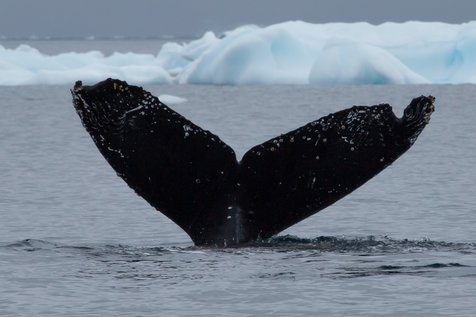 Humpback whale fluke with a distinct notch on the right side, subsequently named ‘Nick’ by guests of Polar Latitudes. PC: Annette Bombosch
Humpback whale fluke with a distinct notch on the right side, subsequently named ‘Nick’ by guests of Polar Latitudes. PC: Annette Bombosch
We submitted our photos of various humpback whale flukes, along with photos of other marine mammal species to another citizen science project called Happywhale. The humpback whale fluke photos were then matched with an active humpback whale catalogue of the Antarctic Peninsula region. Once analyzed, they let us know the whale’s life history if known, or if it’s new to science. In the case of the latter, we gave the whale a name. The guests loved doing this: one whale with a very distinct notch on the right side of the fluke is now known as “Nick.” It is great to help scientists gain a better understanding of the Antarctic ecosystem and it is so worthwhile to see our guests’ enthusiasm when they participate in our projects.
The summer is now over and many animals escape the Antarctic winter bound for areas further north. We do the same, as the Antarctic tourist season ended in late March. We hope that our sampling efforts this season contribute to a better understanding of the distribution of microplastics in this pristine environment, and ultimately help protect this amazing continent.
Microplastics do not belong in any of our oceans, but especially not in the Southern Ocean, which is so far away from civilization. At the end of each trip we hope and believe that we send our guests home as active Antarctic Ambassadors, not only with a love and fascination for Antarctica but also with the will and the need to share Antarctica’s story and to help protect this wonderful place. No matter how many times I come down here, Antarctica keeps taking my breath away. I sincerely hope that it will stay like this forever.
Annette Bombosch is a marine biologist by training and working as an expedition guide in the
Antarctic on board G Adventures’ expedition ship “G Expedition” and Polar Latitudes’ expedition ship “Hebridean Sky.” Phil Hunter is a kayak guide with a background in marine biology and works as kayak master for G Adventures on their expedition ship “G Expedition.” During this Antarctic season Annette and Phil collected water samples for the Global Microplastics Initiative from different areas along the Antarctic Peninsula.
Antarctic on board G Adventures’ expedition ship “G Expedition” and Polar Latitudes’ expedition ship “Hebridean Sky.” Phil Hunter is a kayak guide with a background in marine biology and works as kayak master for G Adventures on their expedition ship “G Expedition.” During this Antarctic season Annette and Phil collected water samples for the Global Microplastics Initiative from different areas along the Antarctic Peninsula.
Find out more about our Global Microplastics Initiative and other Adventure Scientists projects by visiting our website and by following us on Facebook, Twitter and Instagram.

